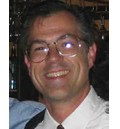In a follow-up letter dated December 9, 2010 to the NRC regarding the differences in release regulations between people and animals, Markey claims that the "bizarre" disparity provides cats and dogs with greater levels of post treatment care. He found the difference s between human and animal regulations "absurd and unacceptable". He did not make clear if he understood that most humans can follow instructions regarding where and how they urinate, defecate, and handle bodily fluids whereas pets can not. His letter demanded a statement from the NRC regarding their plans no later than 6 days after the date of his letter, and threatened remedial legislation. In response to Markey's public activity the ATA has received multiple inquiries from reports, journalists, and news outlets. The ATA issued a joint statement with The Endocrine Society, the Society of Nuclear Medicine, and the American Association of Clinical Endocrinologists in October. On December 13th the ATA spoke directly with NRC Chairman Gregory Jaczko and his staff in a teleconference where we expressed our radiation safety opinions (which will appear in the February issue of THYROID), and the ATA requested that scientific rationale (rather than politics) guide these important decisions. The ATA offered to help generate data for any key remaining scientific questions. Several years ago the ATA became aware of the diversity of safety precautions that were being issued that the ATA conducted a survey to understand the how radiation safety was being practiced. The results of this survey will appear in a manuscript by Carol Greenlee, Lynn Burmeister, Robert Butler, Charlotte Edinboro, Shannon Morrison, and Mira Milas in the February issue of THYROID. In that issue I provide an accompanying editorial, requested by the editor, based on my own opinions and those of the ATA. The editorial makes reference to another coming ATA publication entitled "Radiation Safety in the Treatment of Patients with Thyroid Diseases by Radioiodine (131I) Practice Recommendations of the American Thyroid Association by James Sisson, John Freitas, Iain Ross McDougall, Lawrence Dauer, James Hurley, James Brierley, Charlotte Edinboro, David Rosenthal, Michael Thomas, Jason Wexler, Ernest Asamoah, Anca Avram , Mira Milas, and Carol Greenlee. That publication provides recommendations, in compliance with NRC regulations, that guide physicians and patients to safe practices following treatment with radioiodine. The document provides examples of precaution requirements for professionals as they apply to hyperthyroid patients, or thyroid cancer patients, receiving various activities of radioiodine. The document also provides Safety instructions for patients to be given verbally and in writing. Over the past 5 or more years the ATA has worked to provide sound scientific guidance regarding radiation and radiation safety to the White House, the Nuclear Regulatory Commission, the media, healthcare professionals, patients and their families, and to the public. It is our hope that these latest efforts will provide a basis for consistency, safety, and be a valuable resource to those with thyroid disease, and for those who care for them.
Sincerely,
Richard T. Kloos, MD.
|

 Radioiodine safety continues to be in the news, largely the result of US Representative Edward J. Markey's hounding of the Nuclear Regulatory Commission (NRC). While the clarity, communication, and consistency of information for patients and healthcare providers could be improved, Markey's confrontational approach often comes off as political: sensational and attention seeking as opposed to objective and scientific. His aggressive tone of October 2010 blames "weak NRC regulations", "ineffective oversight", and the "absence of clear guidance to patients and physicians". He expresses erroneous concern that "many" thyroid patients "often" receive more than one treatment in a year. He appears to have locked himself into a course of action with his hard-line approach, and provided little hope that education or data could significantly change his opinion.
Radioiodine safety continues to be in the news, largely the result of US Representative Edward J. Markey's hounding of the Nuclear Regulatory Commission (NRC). While the clarity, communication, and consistency of information for patients and healthcare providers could be improved, Markey's confrontational approach often comes off as political: sensational and attention seeking as opposed to objective and scientific. His aggressive tone of October 2010 blames "weak NRC regulations", "ineffective oversight", and the "absence of clear guidance to patients and physicians". He expresses erroneous concern that "many" thyroid patients "often" receive more than one treatment in a year. He appears to have locked himself into a course of action with his hard-line approach, and provided little hope that education or data could significantly change his opinion. 